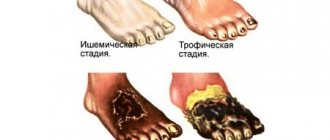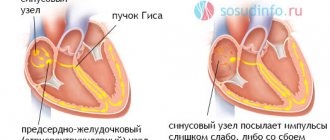intestinal infection
stomach ulcer
inflammation of the stomach
aneurysm
The appearance of noticeable tremors or pulsations in the abdomen is not a common condition for a person, and therefore causes anxiety and concern. In some cases, this symptom can be temporary and manifest itself under the influence of ordinary factors, but there are serious diseases, the characteristic manifestation of which is pulsation in the solar plexus area. If a characteristic pulsation occurs in the solar plexus or other areas of the abdomen, it is recommended to immediately seek medical help and undergo a comprehensive examination.
What diseases cause noise in the head?
There are a huge number of causes of noise in the head and ears. It can occur due to severe fatigue, insomnia, neurosis, stress, after excessive physical exertion, against the background of increased body temperature, taking medications, as well as illnesses and traumatic brain injuries.
At risk of developing tinnitus are city transport drivers, factory and airport workers, and musicians.
What causes noise in the head? It can become a symptom of the following diseases:
- neuritis of the auditory nerve, Meniere's disease, otosclerosis, sensorineural hearing loss, otitis, labyrinthitis and other pathologies of the auditory analyzer;
- cervical osteochondrosis;
- brain tumors;
- atherosclerosis, arterial hypertension, stroke, heart failure, arrhythmia, vegetative-vascular dystonia, as well as other heart and vascular diseases that lead to deterioration of cerebral circulation;
- mental disorders;
- endocrine diseases.
Tinnitus or ringing in the ears and head, according to statistics, is felt by about 10-15% of the world's population. The frequency of its occurrence increases with age, as the likelihood of developing vascular and other diseases increases.
Let's take a closer look at what causes noise in the ears and head.
Migraine
The main symptom of a migraine is a severe headache that affects one side of the head. In addition to this, the patient experiences visual disturbances and ringing in the ears.
Cervical osteochondrosis
The appearance of tinnitus and buzzing in the head, dizziness, headaches that pulsate in the temporal or occipital region may be associated with compression of the blood vessels in the neck and impaired circulation of the auditory analyzer, which occurs with cervical osteochondrosis.
Vascular diseases
The cause of severe noise in the head and throbbing headache can be an aneurysm or thrombosis of cerebral vessels. These are life-threatening pathologies that cause stroke and intracranial hemorrhage.
High pressure
The appearance of noise in the head due to increased pressure is associated with excessive filling of blood vessels. Other signs of hypertension include headache, dizziness, shortness of breath, and nausea. With strong surges in pressure, a feeling of tingling in the heart area, swelling in the temples and fog in the head appears, vision deteriorates, spots appear before the eyes, and the person may lose consciousness. In this case, you need to urgently call an ambulance.
In case of a hypertensive crisis, a person needs emergency medical care
Arterial hypertension is often accompanied by impaired cerebral circulation, which causes a buzzing in the head to occur on a constant basis. If your blood pressure fluctuates frequently, you need to undergo comprehensive treatment. Otherwise, hypertension can cause a heart attack or stroke, which can be life-threatening.
Intracranial pressure
The occurrence of a headache and noise in the head in an adult in the morning, after getting out of bed, is a sure sign of increased intracranial pressure. Other characteristic symptoms of the disease:
- nausea;
- vegetative-vascular dystonia;
- fatigue, lethargy, decreased mental activity;
- irritability;
- dark circles under the eyes;
- hearing impairment;
- increased sweating;
- disturbance of consciousness from stupor to coma (in severe cases).
Headache with increased intracranial pressure is bursting. It gets worse when lying down, coughing or sneezing. During the day, when the person is in an upright position, the symptoms gradually subside as the pressure decreases.
Atherosclerosis
Pathologies of the blood vessels of the brain often lead to throbbing headaches and noise in the head. The most common cause is atherosclerosis. Due to the accumulation of cholesterol plaques on the walls of blood vessels, their elasticity decreases. As a result, blood circulation is disrupted, a buzzing sensation appears in the head, and the patient hears something pulsating in the temples.
With age, there is a natural wear and tear of the blood vessels of the brain and a decrease in the elasticity of their walls.
Pulsating noise occurs due to atherosclerotic narrowing, spasm of blood vessels. It is a sign of blood passing through a narrowed artery.
Thyroid problems
Endocrine disorders can negatively affect hearing. Noise or ringing in the head or ears is a symptom of hypothyroidism, hyperthyroidism. Associated signs of thyroid disease: drowsiness or insomnia, weight gain or loss, nervousness, irritability, forgetfulness, increased heart rate.
Other diseases
The appearance of noise in the head and ringing in the ears is most often associated with vascular diseases. If it is accompanied by a feeling of pressure, fullness in the head, severe headache and dizziness, balance disorders, then you should be examined for the presence of tumor processes.
Often, noise in the ears and head is a sign of diseases and injuries to the auditory analyzer. The main reasons include:
- acute or chronic otitis – inflammation of the middle ear;
- sensorineural hearing loss – hearing loss caused by damage to various parts of the auditory analyzer;
- labyrinthitis – inflammation of the inner ear;
- neuritis of the auditory nerve - accompanied by a violation of the transmission of impulses from the labyrinth to the brain;
- otosclerosis – manifested by impaired mobility of the auditory ossicles in the middle ear;
- Meniere's disease - increased fluid pressure in the inner ear;
- damage to the eardrum;
- Acoustic neuroma is a benign neoplasm;
- age-related deafness.
In addition to ringing or humming, there is a feeling of stuffiness, fullness inside the ear, hearing problems, disturbances of the vestibular system, which include dizziness, nausea, and balance disorders.
The appearance of noise in the head and other sounds is sometimes associated with depression, neurasthenia and other disorders of the central nervous system. Diagnosis of these causes is difficult, since organic disorders cannot be detected during the examination.
Less commonly, noise in the head occurs due to multiple sclerosis, diabetes, kidney disease, and anemia.
Discomfort under the filling
Unlike the previous case, pulsation in the gum under a recently filled tooth does not always indicate a mistake by the dentist. It is important to distinguish the stage of treatment here:
- When installing a temporary filling, pain and pulsating sensations are acceptable during the first few days, since temporary filling is most often carried out with the addition of a devitalizing agent to destroy the neurovascular bundle. The killing of the pulp occurs gradually, but a visit to the doctor is justified if the discomfort persists for more than 2-3 days.
- If discomfort is felt under a permanent filling, it is advisable to get dental care as quickly as possible. The causes of pain can be different; a competent diagnosis based on an X-ray examination of the problem tooth is necessary.
Types of noise in the head:
Sounds in the head, audible only to humans, can have a different character: ringing, buzzing, buzzing, hissing, pulsating, clicking. They can be constant or occur from time to time, for example, only during pressure changes, after stress or physical exertion. They can be sharp or weak, intensify or weaken when changing position.
Due to constant tinnitus, sensitivity to sounds increases
Noise in the head can be localized in the left or right temporal region, in the back of the head, on the sides, or only in the area of the ears. Its intensity and character depend on the disorders in the body that provoked its appearance.
White noise
It is monotonous, barely audible, reminiscent of the rustling of leaves. It often does not leave a person even at rest, which causes insomnia, decreased performance, irritability and nervousness.
Noise like a high voltage line
In case of inflammatory diseases of the hearing organs, the patient is haunted by a noise reminiscent of the sound of electrical wires or a transformer. To get rid of it, you need to treat the underlying disease.
Sometimes this type of noise occurs against the background of high body temperature, physical exertion, or stress at work.
Dull noise
Feels deep in the head. Although it is not loud, it affects sleep, concentration and quality of life. May indicate that the blood vessels are narrowed.
Monotonous noise
Feels like a constant buzzing in the head. It can be caused by cervical osteochondrosis and age-related changes in the auditory analyzer.
Sharp noise in the head with deafening
The appearance of a sharp noise in the head is associated with damage to the eardrum, a jump in blood or intracranial pressure, or traumatic brain injury.
Pulsating noise in the head and ears
More often it is of vascular origin and occurs due to vascular damage. A person feels a pulsation in the temples, back of the head or ears.
Numbness of the head when making noise
If cerebral circulation is impaired due to narrowing of blood vessels due to osteochondrosis or other problems, a feeling of numbness in the occipital region is likely.
Head pressure and tinnitus
The pressing pain that accompanies tinnitus is usually felt with hypertension or increased intracranial pressure. With a migraine, a person describes his condition as if his head is being squeezed in a vice.
Ringing noise
It can be constant or intermittent, and has different volumes. More often indicates diseases of the hearing organs, but may indicate hypertension. As soon as the pressure drops, the ringing immediately decreases.
High frequency noise in the head
Quite unpleasant and interferes with work. Its appearance is most often caused by disorders in the inner ear. It is often not accompanied by hearing loss at first, but if nothing is done, hearing decreases.
Clarifying the diagnosis
To choose treatment tactics for low back pain, it is important to establish an accurate diagnosis. Prostatitis or gynecological pathology rarely causes difficulties. By assessing the clinical picture, examination by a gynecologist or urologist, the presence of inflammatory changes in tests and performing an ultrasound examination, the disease can be determined.
Clarifying the pathology of the spine requires a thorough assessment of imaging methods, since complaints and examination data often do not allow a diagnosis to be made. There are usually no specific changes in the analyzes. The following tools are used:
- X-ray examination. Allows you to see fractures, displacements, and high-density formations.
- CT scan. In addition to gross violations, it makes it possible to evaluate in detail defects of bone and cartilage tissue.
- Magnetic resonance imaging. More suitable for studying soft tissues: muscle bruises, ligamentous injuries, tumors.
The doctor chooses a method based on the specific situation. X-rays are performed more often due to their wide availability and low cost; if clarification is necessary or there is a suspicion of pathology of the musculo-ligamentous apparatus, diagnostic manipulations are expanded to tomography.
What to do if there is noise in the ears and head?
Noise can be caused by various diseases and external factors. Some antibiotics, anti-inflammatory drugs, antidepressants and drugs that have a sedative effect provoke hearing impairment and ear ringing. You cannot self-medicate; you must seek medical help.
A neurologist will help with noise in the head. For consultation with an experienced specialist, you can make an appointment at the SmartMed clinic. The neurologist has extensive clinical experience and access to modern computer equipment. He will conduct a comprehensive diagnosis aimed at identifying the cause and prescribe treatment, after which all unpleasant manifestations will disappear.
Treatment can only be effective when the cause of the noise is known.
You cannot tolerate noise in your head, engage in activities that provoke its intensification, for example, parachute jumping, diving, etc. You need to give up bad habits, normalize your rest and sleep patterns, and do everything to alleviate your condition.
Diagnosis of headaches and noise
In the fight against noise in the head, diagnosis plays an important role. One of the most important stages in the treatment of pathology is establishing the cause.
At the initial appointment, it is important for the neurologist to hear all the patient’s complaints. He studies medical history, asks about recent head injuries, hearing problems, and stress. Afterwards, the neurologist examines the cervical spine to identify areas of vascular compression, checks reflexes, and conducts motor tests to identify possible neurological disorders.
If, after studying the anamnesis, it becomes obvious that the ringing in the head is due to diseases of the ENT organs or mental disorders, the patient is referred to an otolaryngologist or psychotherapist, respectively.
Diagnosis of noise in the head is painless and safe
To make a correct diagnosis, instrumental and laboratory tests are required. Let's consider what examinations a doctor can prescribe for noise in the head:
- otoscopy – microscopic examination of the ear and eardrum;
- audiometry – involves measuring hearing acuity, determining auditory sensitivity to sounds of different frequencies;
- MRI of the brain - shows tumors, stroke, ischemic areas, increased intracranial pressure and other problems;
- CT or MRI of the cervical spine is informative for diagnosing osteochondrosis, hernia and protrusions that lead to compression of arteries and nerve endings;
- Ultrasound of cerebral vessels - helps to identify the cause of hypoxia (lack of oxygen), aneurysm, thrombosis and other vascular diseases;
- MRI of the inner ear - shows neuritis, tumors, consequences of the inflammatory process, age-related changes;
- laboratory research - a clinical and biochemical blood test is prescribed.
Magnetic tomography is of great importance in the diagnosis of ringing in the ears and head. With its help, it is possible to identify any diseases of the brain, hearing organs, blood vessels, damage to the soft tissues of the head and neck, and assess the severity of the consequences of injuries suffered. MRI can be done at the SmartMed clinic, where a modern MRI scanner is installed, which has high resolution.
Treatment for noise in the head
The doctor decides how to treat noise in the head after the examination results are ready. The therapeutic regimen to reduce painful symptoms is developed based on the cause.
Noise can be treated using the following treatment methods:
- Drug therapy. Medicines are prescribed by a doctor. These can be antibiotics, medications for hypertension, drugs that dilate blood vessels in the brain, medications that thin the blood, lower cholesterol, nootropics and others.
- Physiotherapeutic procedures. Eliminates the consequences of otitis, labyrinthitis, osteochondrosis of the cervical spine. Laser therapy, electrophonophoresis, magnetic therapy, electrical stimulation, UHF, acupuncture, and massage are effective.
- Physiotherapy. A set of physical exercises is made up for diseases of the blood vessels and the spinal column.
- Operation. If the tinnitus is caused by a tumor, then its removal is required.
Neurologists at the SmartMed clinic are proficient in all modern methods of treating noise in the head and prescribe the newest and most effective medications.
Prevention
All preventive measures are aimed at preventing vascular diseases, diseases of the brain and hearing organs. To prevent hypertension, hypoxia, atherosclerosis and other diseases, it is important to give up bad habits, eat right, and maintain normal physical activity, since a sedentary lifestyle negatively affects the functioning of the cardiovascular system.
If work involves high noise levels, earplugs should be used to protect your hearing.
It is also necessary to avoid falls, stress, and exposure to high-level noise, which can cause damage to the eardrum or auditory neuritis. If you have any health problems, you should immediately go to the hospital.
Possible reasons
Throbbing pain in the spine in the lumbar region can be caused by several reasons. In the absence of diseases, lumbago practically does not occur. More often this symptom is accompanied by the following pathologies:
- herniated intervertebral discs at the time of pinching of a nerve root;
- traumatic injuries of the spinal column;
- vertebral displacement, subluxation.
The mechanism of pain is associated with irritation of tissue receptors that are adjacent to the affected vertebra. Following this, muscle tension occurs, which increases pain and aggravates the situation.
More rare causes of throbbing pain in the lower back in men include prostatitis, and in women – acute gynecological pathologies. In both sexes, symptoms can develop with exacerbation of urolithiasis.









